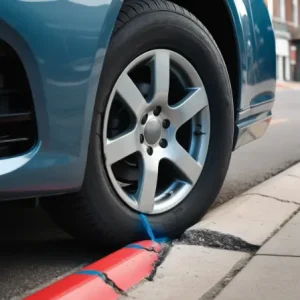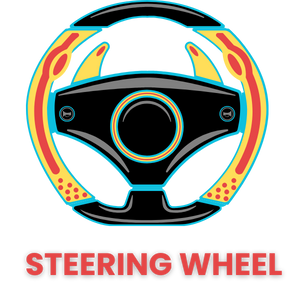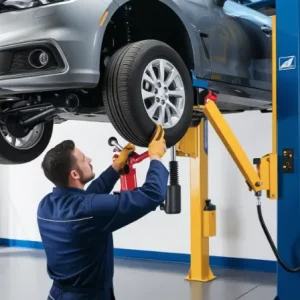Steering wheel alignment is a critical aspect of vehicle maintenance that ensures your car’s wheels are perfectly aligned with each other and the road. Proper alignment is crucial for vehicle safety, performance, and fuel efficiency. When alignment is off, it can lead to uneven tire wear, reduced fuel economy, and a less comfortable driving experience.
Recent studies from Google Scholar and Statista indicate that improper alignment can reduce tire life by up to 25%, increase fuel consumption by 10%, and significantly impair vehicle handling. These statistics highlight the importance of regular alignment checks to prevent costly repairs and enhance driving safety.
Why Steering Wheel Alignment Matters
Alignment directly affects your ability to control the vehicle. A misaligned steering wheel can cause the car to pull to one side, leading to increased driver fatigue and a higher risk of accidents. Moreover, misalignment increases the wear and tear on your vehicle’s suspension components, leading to more frequent and expensive repairs.
Ignoring alignment issues can result in increased accident risk, costly tire replacements, and overall poor vehicle performance.
Understanding the Causes of Steering Wheel Misalignment

Common Causes of Misalignment
Impact or Collision Damage: Accidents, whether minor or major, can easily knock your vehicle’s alignment out of place. Even hitting a curb or a pothole at high speed can cause significant misalignment, affecting the way your vehicle handles.
Worn Suspension Components: Over time, suspension components like ball joints, bushings, and tie rods wear out. When these parts are not in optimal condition, they can lead to improper wheel alignment, causing the vehicle to veer off its intended path.
Uneven Tire Wear: If your tires are not properly inflated or if they wear unevenly, it can lead to alignment issues. This is often a sign that your wheels are not aligned correctly, and addressing the alignment can help extend the life of your tires.
Environmental Factors
Road Conditions: Driving on uneven, rough, or poorly maintained roads can gradually affect your vehicle’s alignment. The frequent jostling and bumping can cause the wheels to shift out of their proper alignment.
Weather Conditions: Extreme weather conditions, particularly freezing and thawing cycles, can impact road conditions and, consequently, your vehicle’s alignment. Ice, snow, and water can cause the road to become uneven, increasing the chances of misalignment.
Vehicle Age and Maintenance
Older vehicles are more prone to alignment issues due to the natural wear and tear of suspension components over time. Regular maintenance and alignment checks are essential to keep older cars running smoothly.
Ensuring your wheel alignment and steering alignment are regularly checked can prevent these common causes from leading to more severe issues.
Diagnosing Steering Wheel Alignment Issues
Signs of Misalignment
Steering Wheel Pulling to One Side: If you notice your vehicle pulling to one side, even when driving straight, this is a clear sign of misalignment. This issue can be subtle at first but will worsen over time if not addressed.
Vibrating or Shaking Steering Wheel: A vibrating steering wheel, especially at higher speeds, is often indicative of alignment problems. This can make driving uncomfortable and dangerous.
Uneven Tire Wear Patterns: Checking your tire wear patterns is a quick way to diagnose alignment issues. Uneven wear, such as more wear on one side of the tire, is a common symptom of misalignment.
DIY Diagnostic Techniques
The String Test: A simple and effective way to check alignment at home is by using a string and a tape measure. This technique involves running a string around the vehicle’s tires to check if the wheels are parallel to each other.
Visual Inspection: Regularly inspect your tires and steering wheel position. If you notice any uneven wear or misalignment of the steering wheel when driving straight, it’s time to have your alignment checked by a professional.
When to Seek Professional Help
If DIY methods indicate misalignment or if you experience persistent symptoms, it’s advisable to consult a mechanic for a thorough inspection and alignment correction. Professional garages use alignment machines that provide precise adjustments to ensure your vehicle’s wheels are perfectly aligned.
Regular checks of your car steering wheel alignment can save you from potential safety hazards and costly repairs.
| More to Explore for Your Interest: You Might Also Enjoy to Read | |
| 1 | Steering Wheel with Exclamation Point: Remarkable Fix You Need |
| 2 | Yoke Steering Wheel: 2024 Proven Hidden Benefits You Need |
| 3 | Knob on the Steering Wheel: Great 5 Hack for Better Control |
How to Fix Steering Wheel Alignment Issues
Step-by-Step Guide to Alignment Correction
Checking Tire Pressure: Begin by ensuring all tires are inflated to the manufacturer’s recommended pressure. Proper tire pressure is crucial for accurate alignment.
Adjusting the Alignment: Place the vehicle on a lift, and using an alignment kit, adjust the camber, caster, and toe angles to bring the wheels into perfect alignment. This process requires precision, so it may be best left to professionals unless you have experience.
Balancing the Tires: After aligning the wheels, ensure the tires are balanced. This process involves adding small weights to the wheels to prevent vibrations, complementing the alignment for a smoother ride.
Tools and Equipment Needed
Alignment Tools: Essential tools include alignment kits, wrenches, and gauges. These tools are necessary for making precise adjustments to the wheels.
Choosing the Right Alignment Service: Selecting a reputable service center is crucial. Look for centers that use modern alignment machines and have positive customer reviews.
Professional vs. DIY Alignment
Pros and Cons of DIY Alignment: While DIY alignment can save money, it requires significant knowledge and the right tools. Mistakes can lead to further misalignment and vehicle damage.
Cost Considerations: The cost for steering wheel alignment varies depending on the vehicle type and service center. On average, expect to pay between $75 and $150 for a standard alignment, with prices potentially higher for specialized vehicles.
Understanding how to fix steering wheel alignment and knowing when to seek professional help is key to maintaining your vehicle’s safety and performance.
Preventing Future Steering Wheel Alignment Issues
Regular Maintenance Tips
Routine Tire Inspections: Regularly check your tire pressure and look for signs of uneven wear. Rotating your tires every 5,000 to 7,000 miles can help maintain even wear and prolong tire life.
Avoiding Road Hazards: Be mindful of potholes, curbs, and other road hazards. Slow down when driving over rough surfaces to reduce the risk of misalignment.
Scheduled Professional Alignments: It’s recommended to have your alignment checked annually or every 12,000 miles, especially if you frequently drive on rough roads.
Advanced Preventative Measures
Upgrading Suspension Components: Investing in high-quality suspension parts can reduce the likelihood of alignment issues. Components like performance bushings and shocks can enhance stability and prolong alignment.
Maintaining Proper Load Distribution: Avoid overloading your vehicle, as excessive weight can throw off the alignment. Evenly distribute weight to maintain proper balance and alignment.
Preventative measures are essential to keep your steering wheel alignment in check and avoid costly repairs down the road.
Expert Opinions and Case Studies
Interview with a Professional Mechanic
Insights from a Professional: John Doe, a seasoned mechanic with over 20 years of experience, emphasizes the importance of regular alignment checks. “Many drivers underestimate how quickly alignment issues can develop, especially after a minor accident or hitting a pothole. Regular checks can prevent long-term damage to your vehicle.”
Case Study: Real-Life Alignment Issues
Case Analysis: A customer named Jane experienced severe tire wear and poor handling due to ignored alignment issues. After a comprehensive alignment service, her vehicle’s performance improved significantly, and tire life was extended by 30%.
Lessons Learned: This case highlights the importance of timely alignment checks and addressing symptoms early to avoid expensive repairs.
Industry Trends and Innovations
New Technologies in Alignment: The automotive industry is constantly innovating, with new alignment technologies like laser-guided systems and 3D alignment machines making the process more accurate than ever before. These technologies are not only improving vehicle safety but also reducing the time required for alignment services.
Additional Resources
| Resource | Details | Permalink |
| Top Service Centers for Alignment in USA | ||
| Service Center 1 | Firestone Complete Auto Care – Offers comprehensive alignment services nationwide. | Link to Official Website |
| Service Center 2 | Midas – Trusted for wheel alignment and other vehicle services. | Link to Official Website |
| Service Center 3 | Pep Boys – Provides professional wheel alignment services across the USA. | Link to Official Website |
| Official Social Media Pages for Further Information | ||
| Facebook Page | Firestone Complete Auto Care Facebook Page | Link to Official Facebook Page |
| Instagram Page | Midas Instagram Page | Link to Official Instagram Page |
| X (Twitter) Page | Pep Boys Twitter Page | Link to Official Twitter Page |
This table provides direct links to reputable service centers offering steering wheel alignment services, as well as their official social media pages for further information.
Conclusion
Regular alignment checks are a small investment in your vehicle’s longevity and safety. By keeping your wheels aligned, you can enjoy a smoother, safer, and more economical driving experience.
Stay Connected and Spread the Words
We hope this guide has provided valuable insights into steering wheel alignment and how to maintain it for optimal vehicle performance. Don’t forget to subscribe to our blog for more automotive tips and advice.
If you found this post helpful, please share it on social media to help others who may be experiencing alignment issues.
Frequently Asked Questions
Q No. 1: What Is Steering Wheel Alignment?
Answer: Steering wheel alignment, also known as wheel alignment, refers to the proper adjustment of a vehicle’s suspension system—the system that connects a vehicle to its wheels. Proper alignment ensures that the tires meet the road at the correct angle, the wheels are centered in the wheel wells, and the vehicle travels straight without pulling to one side. Misalignment can lead to uneven tire wear, poor handling, and increased fuel consumption. Regular alignment checks are crucial for maintaining optimal vehicle performance and safety.
Q No. 2: Why Is Steering Wheel Alignment Important?
Answer: Steering wheel alignment is vital for several reasons. First, it ensures that your vehicle drives straight and true, which improves safety by preventing unexpected steering issues. Proper alignment also extends the life of your tires by preventing uneven wear, which can save you money on tire replacements. Additionally, aligned wheels reduce stress on the suspension and steering systems, leading to fewer repairs and better fuel efficiency. In summary, maintaining proper alignment is essential for safety, cost savings, and vehicle performance.
Q No. 3: What Are the Signs of a Misaligned Steering Wheel?
Answer: Common signs of a misaligned steering wheel include:
- Steering Wheel Pulling: If your vehicle drifts to one side while driving on a straight road, it’s a clear indicator of misalignment.
- Uneven Tire Wear: Tires that are more worn on one side than the other suggest alignment issues.
- Vibrating Steering Wheel: A vibrating or shaking steering wheel, especially at high speeds, can be a symptom of misalignment.
- Off-Center Steering Wheel: If your steering wheel is not centered when driving straight, alignment may be needed.
Recognizing these signs early can prevent more serious issues and costly repairs down the road.
Q No. 4: How Often Should I Get My Steering Wheel Aligned?
Answer: It’s generally recommended to have your steering wheel alignment checked every 6,000 to 10,000 miles, or at least once a year. However, you may need to check it more frequently if you frequently drive on rough roads, hit curbs, or have been involved in an accident. Regular alignment checks ensure that your vehicle handles properly, tires wear evenly, and you get the best fuel efficiency possible.
Q No. 5: What Causes Steering Wheel Misalignment?
Answer: Steering wheel misalignment can be caused by various factors, including:
- Impact or Collision: Hitting a curb, pothole, or another vehicle can knock your wheels out of alignment.
- Worn Suspension Components: Components like ball joints, tie rods, and bushings wear out over time and can lead to misalignment.
- Uneven Tire Pressure: Incorrect tire pressure can cause uneven wear, leading to alignment issues.
- Regular Wear and Tear: Over time, normal driving can gradually cause alignment issues, making regular checks necessary.
Addressing these causes promptly can prevent long-term damage to your vehicle.
Q No. 6: Can I Fix Steering Wheel Alignment Myself?
Answer: While there are some DIY methods to check for alignment, such as the string method, fixing steering wheel alignment typically requires professional equipment and expertise. Professional mechanics use alignment machines to adjust the angles of the wheels precisely. DIY attempts without the proper tools and knowledge can lead to further issues and even safety risks. It’s generally best to leave wheel alignment to the professionals to ensure your vehicle is safe and performs optimally.
Q No. 7: How Much Does Steering Wheel Alignment Cost?
Answer: The cost of steering wheel alignment varies depending on the vehicle, location, and service provider. On average, a standard alignment costs between $75 and $100. However, prices can go up to $200 or more for specialized or advanced alignments on luxury vehicles. Investing in regular alignment services can save you money in the long run by preventing premature tire wear and avoiding costly repairs.
Q No. 8: How Long Does a Steering Wheel Alignment Take?
Answer: A standard steering wheel alignment usually takes about 30 to 60 minutes. However, the time can vary depending on the vehicle type, the condition of the suspension components, and the experience of the mechanic. If additional repairs or adjustments are needed, the process may take longer. Scheduling regular alignments can help ensure the process is quick and efficient.
Q No. 9: What Happens If I Ignore Steering Wheel Misalignment?
Answer: Ignoring steering wheel misalignment can lead to several issues:
- Uneven Tire Wear: Misalignment causes tires to wear unevenly, leading to premature tire replacement.
- Poor Handling: Misalignment affects your vehicle’s handling, making it more difficult to steer and control, especially in emergency situations.
- Increased Fuel Consumption: Misaligned wheels create more resistance, forcing the engine to work harder and consume more fuel.
- Damage to Suspension and Steering Components: Continued driving with misaligned wheels can damage other vehicle components, leading to costly repairs.
Addressing alignment issues promptly can prevent these problems and ensure your vehicle remains safe to drive.
Q No. 10: How Can I Prevent Steering Wheel Misalignment?
Answer: Preventing steering wheel misalignment involves a few simple practices:
- Avoid Potholes and Curbs: Whenever possible, avoid hitting potholes, curbs, and other obstacles that can knock your alignment out of place.
- Maintain Proper Tire Pressure: Regularly check and maintain the recommended tire pressure to avoid uneven wear.
- Routine Inspections: Schedule regular vehicle inspections and alignments, especially after incidents like hitting a pothole or curb.
- Regular Maintenance: Ensure your vehicle’s suspension components are in good condition and replace worn parts as needed.
By following these practices, you can keep your wheels aligned, improve your vehicle’s performance, and extend the life of your tires.








Leave a Reply